
The earliest texts of William Shakespeare's works were published during the 16th and 17th centuries in quarto or folio format. Folios are large, tall volumes; quartos are smaller, roughly half the size. The publications of the latter are usually abbreviated to Q1, Q2, etc., where the letter stands for "quarto" and the number for the first, second, or third edition published.
The Master of the Revels was the holder of a position within the English, and later the British, royal household, heading the "Revels Office" or "Office of the Revels". The Master of the Revels was an executive officer under the Lord Chamberlain. Originally he was responsible for overseeing royal festivities, known as revels, and he later also became responsible for stage censorship, until this function was transferred to the Lord Chamberlain in 1624. However, Henry Herbert, the deputy Master of the Revels and later the Master, continued to perform the function on behalf of the Lord Chamberlain until the English Civil War in 1642, when stage plays were prohibited. The office continued almost until the end of the 18th century, although with rather reduced status.

Sir Paul Getty, known widely as John Paul Getty Jr., was a British-American philanthropist and book collector. He was the third of five sons born to J. Paul Getty (1892–1976), one of the richest men in the world at the time. His mother was J. Paul Getty's fourth wife, Ann Rork. The Getty family's wealth was the result of the oil business founded by George Franklin Getty. One of his sons, Mark Getty, co-founded the visual media company Getty Images.

The Folger Shakespeare Library is an independent research library on Capitol Hill in Washington, D.C., United States. It has the world's largest collection of the printed works of William Shakespeare, and is a primary repository for rare materials from the early modern period (1500–1750) in Britain and Europe. The library was established by Henry Clay Folger in association with his wife, Emily Jordan Folger. It opened in 1932, two years after his death.
Honorificabilitudinitatibus is the dative and ablative plural of the medieval Latin word honōrificābilitūdinitās, which can be translated as "the state of being able to achieve honours". It is mentioned by the character Costard in Act V, Scene I of William Shakespeare's Love's Labour's Lost.

Mr. William Shakespeare's Comedies, Histories, & Tragedies is a collection of plays by William Shakespeare, commonly referred to by modern scholars as the First Folio, published in 1623, about seven years after Shakespeare's death. It is considered one of the most influential books ever published.
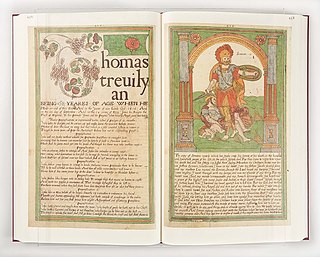
The Roxburghe Club is a bibliophilic and publishing society based in the United Kingdom.

False Folio is the term that Shakespeare scholars and bibliographers have applied to William Jaggard's printing of ten Shakespearean and pseudo-Shakespearean plays together in 1619, the first attempt to collect Shakespeare's work in a single volume. Publisher and bookseller Thomas Pavier is also implicated with 'printed for T.P.' appearing on the title pages.

The spelling of William Shakespeare's name has varied over time. It was not consistently spelled any single way during his lifetime, in manuscript or in printed form. After his death the name was spelled variously by editors of his work, and the spelling was not fixed until well into the 20th century.
William Forrest was an English Catholic priest and poet.

William Shakespeare's handwriting is known from six surviving signatures, all of which appear on legal documents. It is believed by many scholars that the three pages of the handwritten manuscript of the play Sir Thomas More are also in William Shakespeare's handwriting. This is based on many studies by a number of scholars that considered handwriting, spelling, vocabulary, literary aspects, and more.
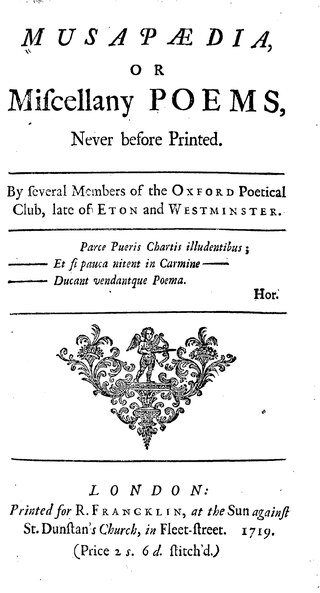
A miscellany is a collection of various pieces of writing by different authors. Meaning a mixture, medley, or assortment, a miscellany can include pieces on many subjects and in a variety of different forms. In contrast to anthologies, whose aim is to give a selective and canonical view of literature, miscellanies were produced for the entertainment of a contemporary audience and so instead emphasise collectiveness and popularity. Laura Mandell and Rita Raley state:
This last distinction is quite often visible in the basic categorical differences between anthologies on the one hand, and all other types of collections on the other, for it is in the one that we read poems of excellence, the "best of English poetry," and it is in the other that we read poems of interest. Out of the differences between a principle of selection and a principle of collection, then, comes a difference in aesthetic value, which is precisely what is at issue in the debates over the "proper" material for inclusion into the canon.

The Trevelyon Miscellany of 1608, compiled by Thomas Trevelyon in London, England in 1608, is an illustrated manuscript miscellany containing handwritten notes and drawings on historical, religious, social and practical themes, adapted from a variety of sources, including the Bible and ancient and contemporary English writers. According to Dr. Heather Wolfe, Curator of Manuscripts and Archivist at the Folger Shakespeare Library, "the primary purposes of the Trevelyon miscellany ... are didactic and mnemonic. The extracts and examples from secular, allegorical, and Protestant texts are an enduring monument for improving one's moral conduct in this life and preparing for the next."

Embroidered binding, also referred to as needlework or textile binding, describes a book bound in cloth and decorated with a design on one or both covers and sometimes the spine. The binding is created for the individual book.
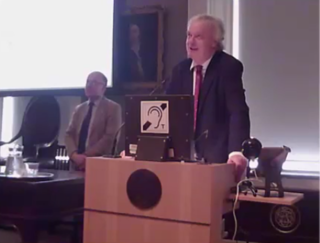
Christopher Francis Rivers de Hamel is a British academic librarian and expert on mediaeval manuscripts. He is a Fellow of Corpus Christi College, Cambridge, and former Fellow Librarian of the Parker Library. His book Meetings with Remarkable Manuscripts is the winner of the Duff Cooper Prize for 2016 and the Wolfson History Prize for 2017.

Michael Witmore is a Shakespearean, scholar of rhetoric, digital humanist, and director of a library and cultural institution. In 2011, he was appointed the director of the Folger Shakespeare Library in Washington, D.C., where he continues to serve.
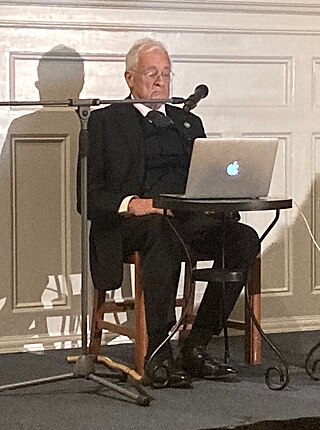
Nicolas John Barker is a British historian of printing and books. He was Head of Conservation at the British Library from 1976 to 1992 and was editor of The Book Collector from 1965-2016.

Susan Shaw born Susan Mahon was a publisher and the British founder of the Type Museum in London. Her publishing house created limited edition books that can sell for thousands of pounds a copy.

The Shakespeare coat of arms is an English coat of arms. It was granted to John Shakespeare, a glover from Stratford-upon-Avon, Warwickshire, in 1596, and was used by his son, the playwright William Shakespeare, and other descendants.
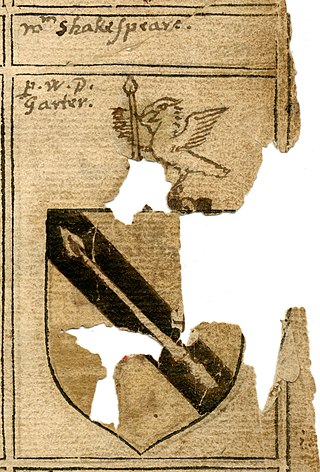
Heather Ruth Wolfe is an American curator of manuscripts and archivist at the Folger Shakespeare Library. A "Shakespeare detective", she has been noted for her research into the history of the Shakespeare coat of arms. She headed "Shakespeare Documented", a project to make contemporary texts involving Shakespeare available online, and is involved in the similar "Early Modern Manuscripts Online" (EMMO) project.

















